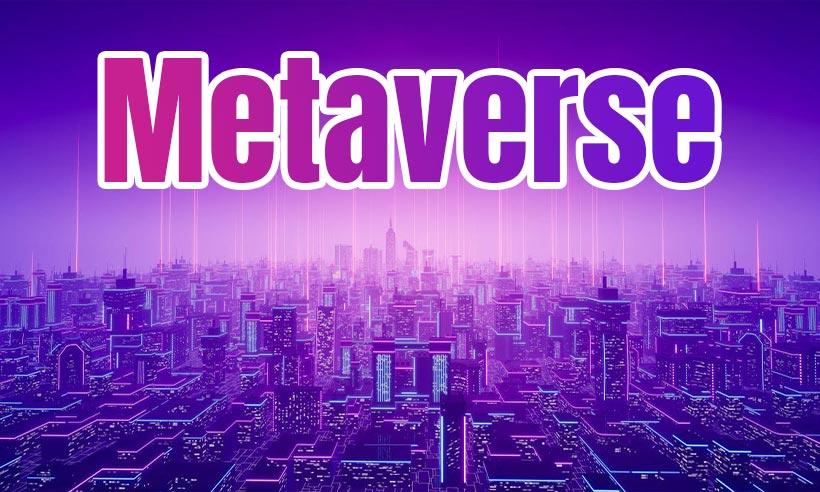Check-Out-Metaverse-Adoption-Statistics-2022
Table of contents
Grand View Research, Inc. predicts that by 2030, the worldwide metaverse industry will reach USD 678.8 billion. Over the projection period, the expectation from the market will be to develop at a CAGR of 39.4 percent, owing to rising demand from end-use industries such as media and entertainment, education, and aerospace and defense.
The development and distribution of Augmented Reality (AR), Virtual Reality (VR), and Mixed Reality (MR) devices can drive metaverse market growth in the upcoming years.
Metaverse's Market Overview
The metaverse is a digital universe that combines physical, augmented, and virtual realities. Virtual Reality (VR), Augmented Reality (AR), Extended Reality (XR), which integrates real and virtual surroundings, and Artificial Intelligence (AI) are the leading technologies that are driving the development of an efficient metaverse ecosystem.
The rising popularity of Mixed Reality (MR) interfaces that integrate real and virtual settings and developments in the XR environment will propel market expansion.
There have been security concerns about VR applications that collect body-tracking data metrics. Systems like eye-tracking, facial recognition, and advanced sensors drive increased investments by companies leveraging opportunities in the metaverse.
They have developed new personal data and privacy protection methods on similar platforms to ensure the safety of users' identities and possessions in the digital world.
The Metaverse Ascension and Revenue Growth
During the COVID-19 pandemic, the metaverse market saw increased investments and a surge in reliance on digital platforms. The epidemic presented a massive opportunity for new entries into the market. They put people on partial or complete lockdown during the pandemic, which replaced physical human interaction with engagement via digital networks.
In November 2020, L'Oreal teamed up with Snap Camera, a desktop program, to allow users to utilize virtual makeup during video conversations. The program worked via Google Hangouts, Meet, Houseparty, Microsoft Teams, Skype, Twitch, and Zoom.
Regional Insights
During the forecast period, the worldwide metaverse market revenue in North America will grow at a quick CAGR.
Because of the region's clients and users who are adopting new and more complex technologies, North America can account for the most significant revenue share of about 45.0 percent in 2021. Another factor expected to boost the regional market's revenue growth is the growing number of start-ups working on construction metaverse platforms for commercialization.
Gaming and metaverse organizations such as NVIDIA Corporation, Epic Games Inc., and The Sandbox, which embed metaverse into games, are driving the market growth in the region. NVIDIA Corporation, for example, announced collaborations with Blender and Adobe that will expand the reach of NVIDIA Omniverse, the world's first collaboration, and simulation platform, to millions of chevaliers.
Over the projected period, the Asia Pacific region is likely to multiply. A growing number of start-ups and organizations in the Asia Pacific region can drive market expansion, including The Sandbox (Hong Kong), Bolly Heroes (India), Axie Infinity (Singapore), NextMeet (India), GuildFi (Thailand), and Shenzhen Zhongqingbaowang Interaction Network Co., Ltd. (ZQGame Global), and miHoYo Co., Ltd. in China. Such virtual metaverse markets and gaming platforms provide an interactive experience in which users can participate in live and concurrent activities powered by third-party apps of their choice.
Platform Insights
Towards the end of 2021, the desktop category had the most significant revenue share in the global metaverse market. The PC sector generated the most income between 2022 and 2030, followed by the headgear. The market was expected to be worth USD 16.38 billion in the previous year.
Computers used to be the primary gateway to the metaverse, but that has changed with the arrival of smartphones and wireless networks. A virtual desktop is a tool that allows HTC Vive, Oculus Rift / Rift S, WMR headsets, and Valve Index users to use their computers in virtual reality. Users may surf the web, watch Netflix movies, and play games on a big virtual screen.
Digital desktops are gaining popularity as a way to use VR devices. Thanks to smartphones and mobile networks, access to the metaverse have become unparalleled and near-constant. There is an increase in downloading, uploading, and sharing data in networked cyberspace.
Mobile phone users can upload photos and videos to the metaverse and use video conferencing and messaging apps to communicate with others. Users can chat with one another while playing online multiplayer games. Smartphones are growing more ubiquitous, and they are quickly becoming the most common means to connect to the virtual world.
Technological Insights
There are three main categories in the global metaverse market: mixed reality, virtual reality, and augmented reality. In 2021, Virtual Reality (VR) and Augmented Reality (AR) experienced strong revenue growth.
The metaverse is a hypothetical version of the Internet that supports persistent online 3D virtual environments using virtual and augmented reality. The metaverse is a blend of VR and AR that creates a sensation of virtual presence.
Furthermore, virtual reality and augmented reality will soon become one of the most revolutionary technological advances over the next five years. The future of this segment will be driven primarily by this factor.
According to forecasts, blockchain will expand at a steady pace by 2022. Blockchain technology enables interoperability in the metaverse, digital proof of ownership, digital collectibility of assets (like NFTs), cryptographic value transfer, and governance, among other capabilities.
Axie Infinity, Decentraland, and SecondLive are examples of blockchain-based metaverses. Blockchain technology has generated significant opportunities for businesses to meet the continuously expanding demand for various virtual currencies in the recent past.
Major Corporations and the Competitive Environment Insights
Significant firms are investing in product development, launches, and strategic collaborations to extend their distinct product portfolios and achieve a firm footing in the global market. The following are some of the prominent firms profiled in the market report:
Key Takeaways
The metaverse as a whole is a reasonably futuristic notion with numerous advantages. Virtual living standards will improve with the entrance of metaverse technology, and it will be feasible to unite digital platforms into a single segment. Metaverse technology may allow medical personnel to detect and treat illnesses at an early stage. Retail businesses will be able to show their products to customers with this technology.
The game universe, which will feel more accurate thanks to a metaverse, will be the most diverse application of this technology. Additionally, this technology will improve the travel experience by allowing users to go to foreign locations via a metaverse. Aside from these, numerous other advantages will become apparent over time.

